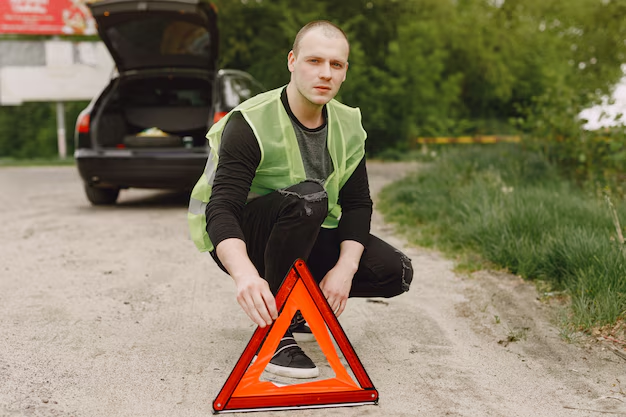
As you navigate the bustling roadways of daily life, the threat of a rear-end collision becomes a constant concern. While often dismissed as minor fender-benders, these accidents can result in serious injuries and significant property damage. Understanding the common causes of St. Louis rear-end accidents is crucial for drivers seeking to protect themselves and others. In this article, we'll explore the primary culprits behind rear-end accidents, equipping you with the knowledge to recognize and mitigate these risks during your daily commute.
Driver distraction has become the leading cause of rear-end collisions today. You might be surprised to learn how many seemingly harmless activities can divert your attention from the road, putting you and others at risk.
Distracted driving isn't limited to texting or talking on the phone. It encompasses a wide range of activities that take your eyes, hands, or mind off the task of driving. Some common distractions include:
To reduce your risk of causing a rear-end collision, consciously eliminate distractions while driving. Put your phone away, set your GPS before you start your journey, and save that breakfast sandwich for when you reach your destination. Remember, your full attention on the road isn't just a suggestion—it's necessary for your safety and the safety of others.
When you tailgate, you significantly reduce your reaction time and stopping distance. This puts you at high risk of colliding with the vehicle ahead if traffic conditions change unexpectedly. Even a moment's distraction or a slight delay in braking can result in a rear-end collision when following too closely.
To avoid tailgating, always maintain a safe following distance. A good rule of thumb is the "three-second rule." Choose a fixed point ahead, such as a road sign or tree. When the vehicle in front passes that point, count "one-thousand-one, one-thousand-two, one-thousand-three." If you reach the fixed point before finishing the count, you're following too closely.
When you're driving too fast, your reaction time decreases dramatically. This reduction in response time can be the difference between a near-miss and a devastating crash. Speeding also increases the distance required to bring your vehicle to a complete stop, making it more likely that you'll collide with the car in front of you if it suddenly breaks.
Aggressive driving encompasses a range of risky behaviors, including:
These actions endanger the aggressive driver and put other motorists at risk. Tailgating, in particular, leaves little room for error and often results in rear-end collisions when traffic slows unexpectedly.
The impact of speeding and aggressive driving extends beyond individual incidents. These behaviors can create a ripple effect on the road, causing other drivers to react defensively or erratically. This chain reaction increases the likelihood of multi-vehicle accidents, with rear-end collisions often being the initial point of impact.
Inclement Weather Conditions
When the skies open up, and rain starts pouring, your risk of being involved in a rear-end collision increases significantly. Inclement weather conditions seriously threaten drivers, creating hazardous road conditions that demand extra caution and attention.
Heavy rain, fog, or snow can severely limit your ability to see the road ahead. This reduced visibility makes it challenging to gauge the distance between your vehicle and the one in front, increasing the likelihood of a rear-end accident.
Slippery Road Surfaces
Wet or icy roads dramatically decrease tire traction, making stopping quickly or maintaining vehicle control harder. This loss of grip can lead to sliding or skidding, especially if you need to brake suddenly.
Hydroplaning Risks
In heavy rainfall, your tires can lose contact with the road surface, causing your vehicle to hydroplane. This loss of control can be particularly dangerous if you're following too closely behind another vehicle.
Mechanical Failures and Car Malfunctions
One of the most critical components in preventing rear-end accidents is your vehicle's braking system. Worn brake pads, damaged rotors, or leaking brake fluid can all compromise your ability to stop quickly.
Your car's tires are its only point of contact with the road. Bald tires, improper inflation, or sudden blowouts can cause you to lose control, especially when trying to stop quickly.
While less common, electrical system failures can contribute to rear-end accidents. Malfunctioning brake lights or taillights can make it difficult for drivers behind you to anticipate your actions.
St. Louis rear-end accidents remain among the most common road collisions today. By understanding the primary causes - distracted driving, tailgating, sudden stops, poor weather conditions, and vehicle defects - you can take proactive steps to reduce your risk. Always maintain a safe following distance, stay alert and focused on the road, adjust your driving for conditions, and maintain your vehicle properly.